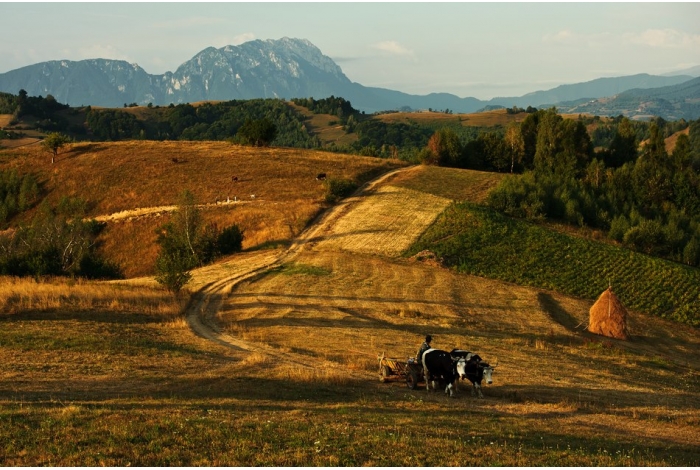Being Romanian
How do you define your identity? Where and what makes you feel being at home? We encourage you to try out your own experimentation with cultural identity.

Cart pulled by oxen in a beautiful Romanian village. Photo by Vlad Dumitrescu
Every now and then as we grew up, my sister and I went on visits to our grand-parents. Although ‘Tata’ was very nice to us, gave us presents and even occasionally allowed us to sip wine, while ‘Mama’ stuffed us full of delicious pastries – we did not entirely enjoy the visits. We hated my grandfather’s traditional village music, of which he had a seemingly inexhaustible supply. We were desperate to be modern, teenagers of the Revolution, eager to taste the new-found freedom, starvingly embracing all that came from abroad (such as rap, the music of aggressive and essentially urban search for freedom). To us, calling someone ‘peasant’ was an insult, listening to traditional music and watching TV shows with traditional dancing was backward. City life was the only life we knew and wanted.
A decade later and thousands of kilometers away from home, lying on the bed in my little room in the South of India, I had a little feeling glimpse of what it meant to be Romanian. It didn’t have much to do with city life. It had in fact very much to do with my grandfather’s traditional music. I can’t remember why I had a CD of it with me. After all, I hadn’t listened to the stuff since the family visits. I guess 10 months in India, with its culture that could hardly be more different than my own, brought things into perspective. And so, with the music in my ears and the words from a Romanian poetry book I was reading in my thoughts, I found myself at home.
It’s hard to explain the feeling that to me was paradoxical. After all, both the lyrics of the songs and the poetry spoke of something I had never experienced: village life. Village life was a feeling inside of me: one of closeness to the land, of sadness at being away from it, of longing for it, of pride and wonder that it is always with me in the sounds of my language and in the flow of my blood.
For this complex mix of sentiment, we Romanians have one word: ‘dor’. I believe this little un-translatable word carries a nearly 2000-year old history of what it means to be Romanian. It represents the identity of the roots, while today’s modernism, with its urbanization, outside influences and globalization, is the identity of the branches.
The Village magazine is recognition of this fact. It is an attempt at keeping the roots alive and nourished, as without them the branches too soon wither. We believe that the tree of cultural identity needs all its parts in equal measure in order to survive and thrive, not just those easily discernible. By using the branches of globalization after all, our journalists are young people from all over the world – to nourish and enhance the value of the roots, we’ve embarked on an experiment of holistic cultural exploration. And it is up to you, our readers, to determine how successful our experiment is. We only hope that it will encourage you to try out your own experimentation with cultural identity.
by Mircea Samoila




